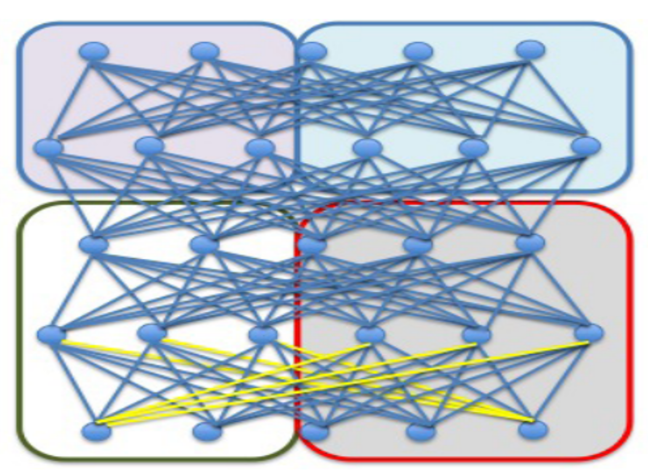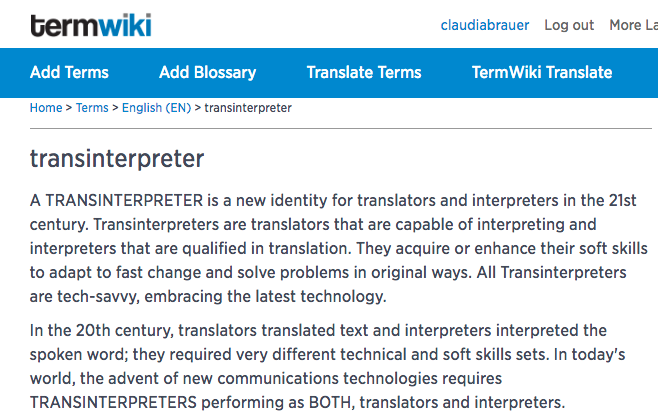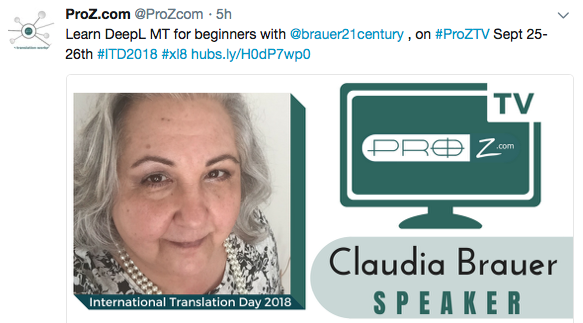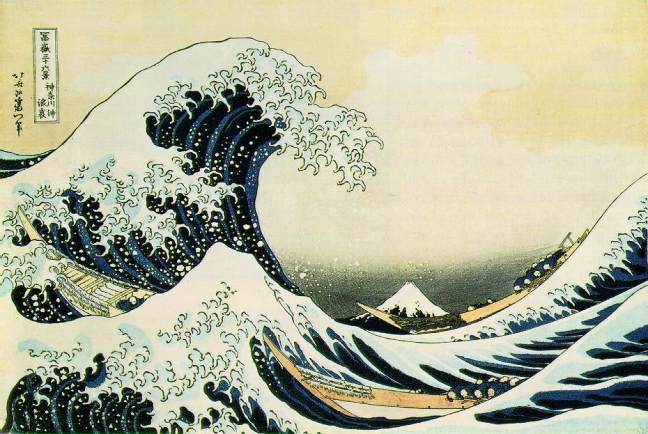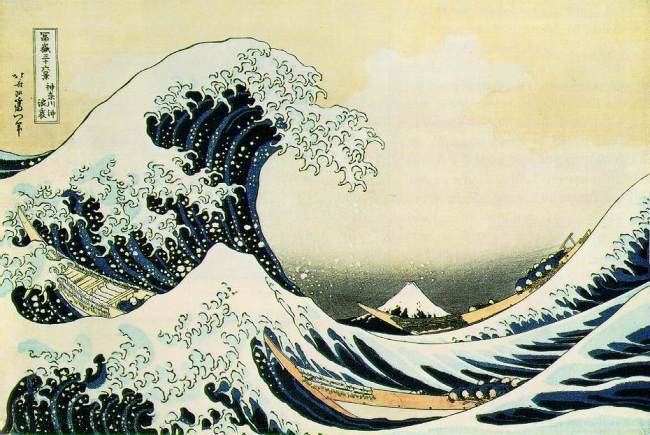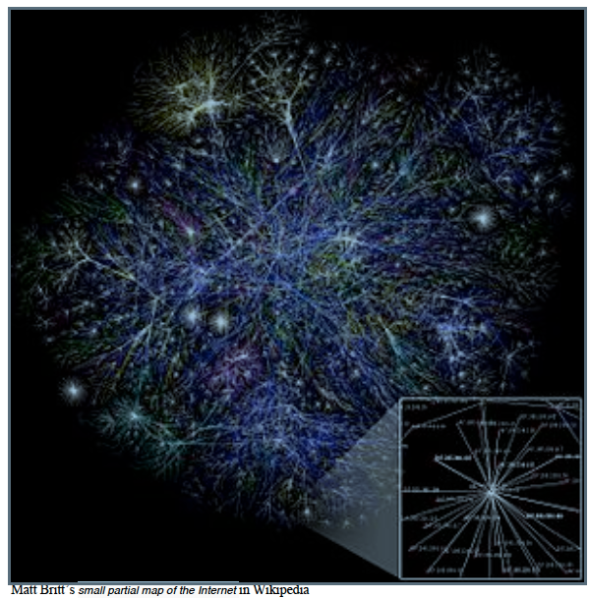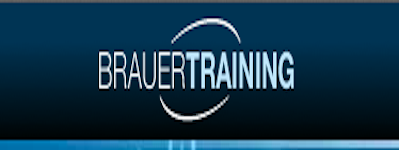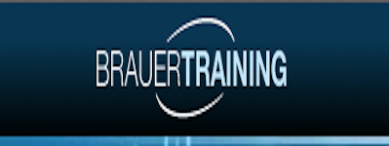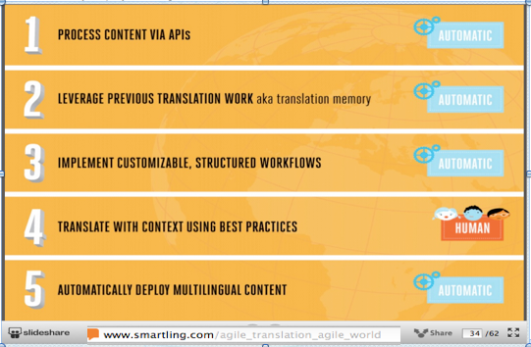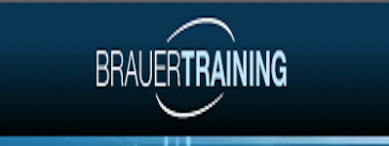PRE-CONFERENCE WORKSHOP BY CLAUDIA BRAUER
On the occasion of my upcoming workshop on DeepL and Machine Translation during the 2022 ITD, I was looking at an old blog I wrote in 2018, the same year DeepL was incorporated. At the time, I was already saying that translators should look into the field of post-editing as one of the options to remain competitive. Less than four years later, post-Covid pandemic the world has fewer language barriers as people anywhere and everywhere use Machine Translation THOUSANDS OF MILLIONS of times a day.
What then of the translator?
You tell me…
Are you able to make a living on traditional “human-only” translations?
Good for you! You have found a niche that is hiding from most of us.
Just as an example, the term “human-in-the-loop” is now common in LSPs and other intermediaries of the language services industry and in large corporations that provide their own translation services. This term reflects the fact that they have an automated process where a human will “edit” or “improve” or take the machine translation output and make it “akin to human translation”. The process is automated and takes into account the need for human intervention. Not the other way around.
I am not advocating for this. I did not invent this. I have no skin in the game of machine translation engines. I receive no compensation other than the one I earn by telling you that this trend is here to stay and to grow and become mainstream. I am here to tell you that you need to adapt. It is time for you to think outside the box and realize that reality has changed dramatically in the field and that, for most translators, it will become the norm. I am referring to post-editing machine translation.
Maybe this is not for you. Great, thanks for stopping by. We can all agree to disagree. No problem.
But if you are struggling to find work (and will struggle even more in the coming years), why don’t you start to think of the “upskills” you need to meet the new challenges brought about by neural machine translation and artificial intelligence in the world of translation (and interpreting).
I take you through the first steps…. so you can test the waters and see if they are warm enough for you… The workshop will be offered April 28, 2022 and recordings will be made available for those who registered on time.
https://www.proz.com/tv/ITD2022
✓ Learn about the versatility of the free MT version
✓ Have a rough draft translation in seconds
✓ Find and use alternate translation terms in seconds
✓ Create a light post-edited document very fast
✓ Learn about the paid MT version for professionals
✓ Understand how DeepL ensures confidentiality
✓ Understand how to can create a professional translation
using full post-editing to save time
✓ Understand how to create and use electronic glossaries
✓ See how you can incorporate MT into your CAT tools
Who is this course for?
✓ Any translator in any language pair anywhere in the world (with access to the internet)
✓ Any interpreter who would like to incursion into the world of translation
✓ Any person who needs to acquire basic information about a document (lower quality translation without post-editing)
✓ Only requirement: sufficient command of English to understand the session
https://www.proz.com/tv/ITD2022

In the meantime, let me share part of that 2018 blog I was mentioning earlier in here .
Hope to see you in cyberspace!
Claudia Brauer
Human Parity
Excerpts from “DeepL MT: A Game Changer for professional translators”
(*)https://claudiabrauer.com/2018/09/20/deepl-mt-a-game-changer-for-professional-translators/
As part of the study materials I distribute, I share my Quality Guidelines for Human-Quality PEMT (Post Editing of Machine Translation Output).
This is what I believe a Human-Parit PEMT should achieve:
Purpose:
· Accurate (preserve intended meaning of the original)
· Correct grammar, syntax, style
· Correct informal aspects of written language
· Sensitive to regional variations (dialects and target language use)
· Written (mostly) in plain language
· Culturally and Linguistically appropriate (terms and expressions must be understood appropriately and consistently by most people reading text in TL)
· Follow glossaries when provided
· Follow style guides when provided
· Avoid literal translation (too formal, complicated, awkward texts, though semantically equivalent)
· Aim for “comparable constructs”
Information:
- Complete (no omissions, additions, or changes)
- Loyal (the same message is conveyed)
- Accurate (same information transferred)
- Reliable
- Consistent
- Technical equivalence (technically and conceptually)
- Conceptual equivalence (content) (Does it accurately reflect original meaning?)
- Intent (Have connotations and denotations been transferred)
Essentials
- Grammar (system and structure of language)
- Style (word choice, point of view, tone, + syntax)
- Syntax (rules governing sentence structure, including word order, to achieve particular effects)
- Semantics (sense, reference, implication, logical form, word relations, cognitive structure)
- Register (level of formality)
- Readability Level (easier or more difficult to read)
- Format and Layout (including document setup, arrangement, charts, graphics, illustrations)
- Spelling
- Punctuation
- Capitalization
Correct and optimal use of language:
- Language conventions
- Dates
- Numbers
- Addresses
- Acronyms (transfer)
- Abbreviations
- Names of people
- Names of countries and places
- Brand names
Other issues to ensure:
- Fluency
- Phrasing
- Nuances
- Absence of False cognates
- Cultural Sensitivity (will it make sense to the target audience or will it create confusion or concern)
Other recommendations:
CONSTANTLY COMPARE MACHINE TRANSLATION PLATFORMS
- Select three or four to compare
- Obtain translations
- Review each individually
- Compare changes
- Select preferred
- Repeat every three or four months (new or improved versions)
Rating
5 Excellent
4 Correct
3 Enhance
2 Doubtful
1 Incomprehensible
or
5 Top human translation quality equivalence
4 Normal HT equivalence
3 Beginner HT equivalency
2 Misinterpretations
1 Gross Errors
==============================================================

